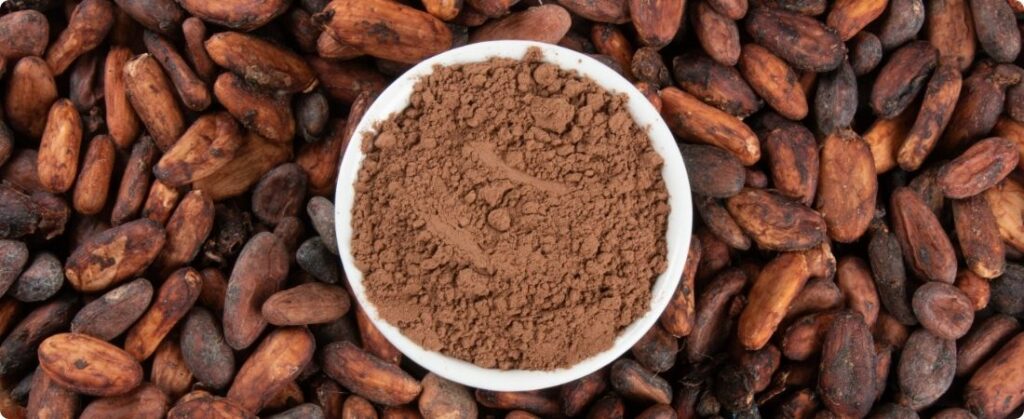
Currently, the record price of almonds cocoa in the international market, it favors producers who dedicate themselves to cocoa farming in Espírito Santo lands. The marketed value of the product more than doubled from January to June this year. The rise in prices encourages farmers in the state, which is the 3rd largest Brazilian producer of cocoa, with significant production in 45 municipalities in Espírito Santo. Linhares is the largest producer and concentrates 69,78% of state production.
In Espírito Santo, cocoa represents a supplementary income for many farmers and is present in 2,60% of rural establishments, totaling 2,806 establishments. Of these, 69% are family farming, equivalent to 1,924 establishments. Furthermore, the ten largest producing municipalities total more than 91% of production, according to a survey by the Data and Analysis Management of the State Secretariat for Agriculture, Supply, Aquaculture and Fisheries (Seag). In 2023, it is estimated that cocoa production will reach 13.7 thousand tons, an increase of 16.71 TP3T compared to 2022, in an area of 17.7 thousand hectares. Finally, among fruits, cocoa ranks third in terms of importance for generating rural income, behind only papaya and banana.
Espírito Santo cocoa derivatives reached 45 countries last year, with Uruguay (20,45%), Bolivia (16,73%) and Argentina (16,44%) as the main importers. Last year, exports of cocoa derivatives reached 2.9 tons and US$ 15.7 million and Espírito Santo is currently the fifth largest exporter of cocoa and derivatives in Brazil. This year, in the first quarter of 2024 alone, exports reached 34 countries, totaling 4.1 million dollars.
Cocoa strengthens the economy and the chocolate sector in Espírito Santo
The production of cocoa it also strengthens the economy of Espírito Santo, as well as its main derivative product, chocolate, says the Secretary of State for Agriculture, Enio Bergoli.
“The data confirms that cocoa production is advancing significantly. The great economic contribution of this activity is in the secondary sector, that is, in the industrialization of raw materials, for the manufacture of cocoa derivatives, which with the quality we have, generates even more added value. The appreciation of the product in the production sector is important to encourage producers to produce the main raw material for making chocolates”, stated the secretary.
Enilton Nascimento de Santana is a researcher and responsible for the phytopathology laboratory at Incaper. He commented on the research projects developed and recalled that the rising price of almonds favors producers. “Incaper carries out extensive work for the producer to make advances in farming, helping with pest control, almond quality, production checking, fermentation and grain storage”, he highlighted.
He also commented that the rise in prices favors and can encourage the expansion of cultivation in the State. In 2024, the rise in prices on the New York Stock Exchange benefited cocoa producers, local companies and rural workers, according to Nascimento.
The fruit has boosted Espírito Santo agribusiness and generated more opportunities. Márcia Ribeiro is from Rio Bananal, and says that her father always worked with coffee and cattle, but 3 years ago he saw cocoa farming as another opportunity to generate income and decided to invest.
Women transforming cocoa farming
“My plants here, the oldest, are three years old. Since I became interested in cocoa farming, I invested in courses, exchanges and studied a lot before planting and cultivating cocoa, and I continue to learn. After all, I know that culture, despite the difficulties, is what arouses the most interest among women who start working with this plant. Therefore, I see in our exchanges of conversations and experiences how much women enjoy and feel fulfilled in working with cocoa”, said Márcia Ribeiro.
Furthermore, the State Government, through Seag, develops the 'Women of Cocoa' project in partnership with the Capixaba Institute of Research, Technical Assistance and Rural Extension (Incaper). The project aims to encourage and specialize women in the practice of this cultivation. This is the case of Nilzete Capellini, a participant in the project. “Working with cocoa for almost two years, I managed to change my family’s income and livelihood”, he highlighted.
Cocoa cultivation is gaining importance in Espírito Santo, rivaling conilon coffee and dairy farming, according to Lucas Calazans Santos from Incaper. “It’s an important crop, where you can produce almonds and then store them. Store safely and sell whenever you want, as it is not perishable. Furthermore, it is a product that can be sold in any quantity and at a reasonable price, which also brings security to the producer”, said Calazans.
Among the more than 310 municipalities in Brazil that produce cocoa, Linhares is the 6th largest in the national ranking and concentrates 70.7% of state production. In addition to quantity, Espírito Santo cocoa production receives a quality seal. Since 2012, the State has had an indication of origin for cocoa, registered with MAPA, highlighting the quality of regional products.
Women in Cocoa Project
The “Women of Cocoa” project aims to achieve gender equality in cocoa production, empowering women with quality technology and technical assistance. In 2022, the project served 185 women in the municipalities of Linhares, Rio Bananal, Colatina, São Roque do Canaã and Santa Teresa. Additionally, the project responds to the demands of women in Linhares for the “Elas no Campo e na Pesca” program, which focuses on entrepreneurship and leadership, through Seag and the State Government. To participate, candidates must work with cocoa on a family farm. In addition, women receive support from domestic economists who advise on product labeling and access to special markets.
Source: Notícias Agrícolas










